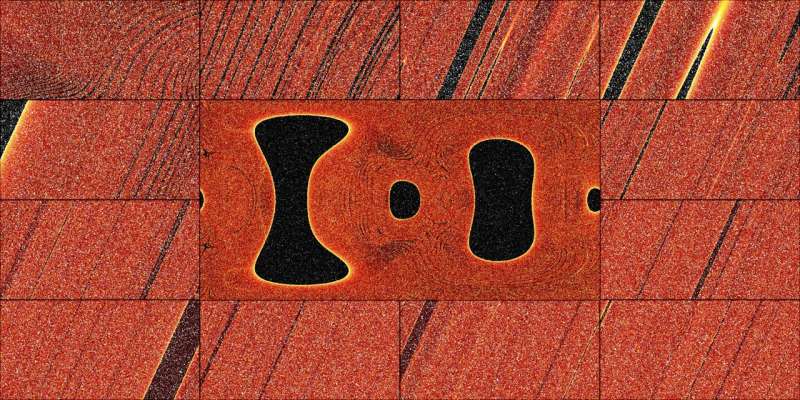Researchers have discovered unexpected ‘islands of regularity’ within the famously chaotic three-body problem, offering new insights into the fundamental forces governing our universe. This finding could revolutionize our understanding of gravitational waves and other cosmic phenomena. The three-body problem, which has intrigued scientists since Isaac Newton‘s time, has long been considered unsolvable, but this breakthrough suggests there may be more order amidst the chaos than previously thought.

Unraveling the Mysteries of Gravitational Interactions
The three-body problem has long been a source of fascination and frustration for scientists. When three massive objects, such as stars or black holes, interact through the force of gravity, their movements become unpredictable and chaotic. This is the conventional understanding, based on the theory that the three-body system is inherently unsolvable.
However, a researcher from the University of Copenhagen has challenged this notion, discovering that such three-body encounters often follow regular patterns, with one of the objects being quickly expelled from the system. This groundbreaking finding could have far-reaching implications for our understanding of gravitational waves and other fundamental mysteries of the universe.
Mapping the ‘Isles of Regularity’ in the Chaotic Sea
To investigate this phenomenon, the researcher, Alessandro Alberto Trani, developed a software program called Tsunami, which can simulate the movements of astronomical objects based on the laws of physics, such as Newton’s gravity and Einstein’s general relativity. By running millions of simulations of three-body encounters with varying initial parameters, Trani was able to create a vast tapestry of possible outcomes.
Within this tapestry, the researcher discovered the presence of ‘isles of regularity’ – areas where the system behaves in a predictable manner, leading to uniform outcomes. This finding challenges the prevailing notion of the three-body problem as a purely chaotic system, suggesting that there may be underlying patterns and regularities waiting to be uncovered.
Implications for Gravitational Wave Research and Beyond
The discovery of these ‘isles of regularity’ holds great promise for a deeper understanding of the three-body problem and its real-world applications. One of the key areas where this knowledge could prove vital is the study of gravitational waves, which are ripples in the fabric of spacetime caused by the motion of massive objects, such as black holes and neutron stars.
Understanding the interactions of these celestial bodies, particularly when three or more come together, is crucial for deciphering the mysteries of gravitational waves and other fundamental phenomena. By shedding light on the regular patterns that can emerge even in chaotic three-body systems, Trani’s research may pave the way for improved astrophysics models and a more comprehensive understanding of the universe’s most enigmatic processes.
